Why Iron Matters For Babies & Toddlers
Iron is one of the most important nutrients for babies and toddlers. It supports healthy brain development, energy, and immune function. By 6 months, a baby’s natural iron stores start to run low, which means it’s key to start including iron-rich foods early on. For toddlers, iron continues to play a big role in keeping those little bodies and brains thriving during rapid growth spurts.
But here’s the challenge: iron deficiency is common in kids under 3, especially if they’re picky eaters, not eating eating much meat, or drinking a lot of milk. As a dietitian and mom, I know how overwhelming it can feel to make sure your little one is getting enough. That’s why I wanted to write a post that breaks down exactly how much iron your kiddo needs, the best iron rich foods for toddlers, practical serving sizes, and simple ways to boost absorption.
I’ve also included my favorite iron rich recipes and go-to toddler products, all tested and mama-approved so you’ll feel confident at mealtimes!
How Much Iron Do Babies & Toddlers Need?
According to the American Academy of Pediatrics (AAP):
- 6-12 months: 11 mg/day
- 1-3 years: 7 mg/day
- 4-8 years: 10 mg/day
This might not sound like much (or maybe it sounds like a lot?!), but with little appetites and food preferences, every bite really counts! Aka, why it's so important to choose nutrient-dense meals for little ones to ensure they're getting the nutrients the need to thrive.
Top Iron Rich Foods for Toddlers (With Realistic Serving Sizes)
Here's a list of iron rich foods for toddlers that you can keep in your saved links:
Eggs
1 egg = ~0.9 mg iron
The yolk is where majority of the iron is! Scramble it into oatmeal, mash on toast, serve as french toast, or mix into veggie muffins. Eggs are such a nutrient powerhouse, but I totes get that a lot of toddlers refuse them at times!
- veggie egg muffins
- sausage cheese breakfast muffins
- mashed egg + avocado toast
- chickpea guacamole (mashed chickpeas + avocado + everything bagel seasoning)
- french toast
- egg "crepe" filled with yogurt and fruit
Meat
about 1 oz cooked meat = ~0.5-1 mg iron
2-3 toddler-sized meatballs (about 1 oz total) = ~1 mg iron
Meat is one of the richest sources of heme iron (the kind that’s easiest for the body to absorb). Even small amounts add up and help boost absorption from plant-based foods served at the same meal! We are big meatball fans around here because they're super easy to prep, soft for little eaters, and little hand worthy to grab.
- storebought meatballs or chicken meatballs
- homemade veggie-packed meatballs
- meatloaf meatballs
- turkey apple meatballs
- zucchini cheddar meatballs
- mongolian meatballs
- shredded beef like this short rib beef ragu pasta
- ground turkey or chicken patties
- shredded pulled pork or chicken
Chickpea or Lentil Pasta
½ cup cooked (toddler portion) = ~3 mg iron
Toddlers may not go for plain lentils or chickpeas, but pasta feels familiar and keeps the iron!
- lentil pasta with marinara or pesto
- creamy lentil pasta sauce
- butternut squash sauce with chickpea/lentil pasta noodles
- pasta salad with tomatoes, mozzarella pearls, and chopped turkey pepperoni or rotisserie chicken
- crunchy roasted chickpeas (2+, depending on the eater's chewing ability)
Fortified Cereals
½-¾ cup dry = ~5–8 mg iron
One of the easiest wins, big iron boost in a small amount! Serve dry as finger food, with milk, or mixed into yogurt. Note that some of these contain added sugar, which is ideally for 2+ yo.
- Cheerios (½ cup = 4.2 mg) - such a great source that's baby + toddler friendly!
- Little Spoon oatmeal cereal (6 tablespoon = 5.5 mg)
- Wheat Chex (½ cup = 9 mg)
- Wheaties (½ cup = 5.4 mg)
- Special K (½ cup = 5.4 mg)
Non-Fortified Options:
- Seven Sundays (1 cup = 0.8 mg)
- Three Wishes Unsweetened (½ cup= 1 mg)
- Cascadian Farms Purely O's (½ cup = 0.8 mg)
There's also iron-fortified milk options like Ripple unsweetened milk!
Oats
½ cup cooked oats = ~1.5 mg iron
Oats are naturally higher in iron than most grains, plus many oatmeal products are fortified, giving them an even bigger boost. They’re also easy to mix with fruit, seeds, or nut butters to make a balanced, iron-rich meal. You can even use these cereals to make pancakes, waffles, or muffins!
- baby oatmeal cereals (fortified, 6+ months) → Gerber Organic, Happy Baby Organic Oats (~5 mg iron per ¼ cup dry), Little Spoon oatmeal cereal
- rolled oats or quick oats (naturally contain ~1.5 mg iron per ½ cup cooked)
- steel cut oats (chewier texture, ~2 mg iron per ½ cup cooked)
Spinach
¼ cup cooked or 1 cup raw = ~0.8 mg iron
On its own, spinach isn’t usually a toddler favorite. But mixed into pancakes, smoothies, or cheesy dishes, it’s more approachable.
- banana spinach pancakes or waffles
- spinach egg wraps
- spinach smoothie with nut butter, hemp hearts, and ground flax for even more iron!
- spinach oatmeal muffins
- cheesy spinach quesadillas
Edamame
¼ cup shelled = ~1.1 mg iron
A surprising toddler-friendly veggie! Easy to keep frozen and microwave quickly.
- steamed shelled edamame (great for lunchboxes or snack boxes))
- crunchy roasted edamame (The Only Bean, ideally 4+, depending on the eater's chewing ability)
- toss into fried rice
- mashed into edamame spread
Chia Seeds
1 tablespoon chia seeds = ~1.2 mg iron
Chia seeds pack in iron, fiber, and healthy fats all in one spoonful. They’re also easy to add in foods toddlers already love like smoothies, oatmeal, or muffins. We love to call them "sprinkles" and have my toddler sprinkle them on whatever he wants!
- chia pudding made with fortified milk + fruit (vitamin C for better absorption)
- stirred into oatmeal or yogurt bowls
- baked into muffins, waffles, or bars
- mixed into chia jam as a topping for toast or pancakes
Using Tiny Sprouts booster seeds makes it even easier to add in a combo of seeds in one scoop!
Nut & Seed Butters
1 tablespoon = ~1 mg iron
Almond butter, sunflower seed butter, tahini, and pumpkin seed butter are all rich in iron.
- stirred into oatmeal
- spread on pancakes
- stirred into a yogurt dip for apple slices
Pumpkin Seeds
¼ cup whole = 4 mg iron
1 tablespoon ground or seed butter = ~1 mg iron
Whole seeds are a choking hazard for babies, but pumpkin seed butter or finely ground seeds are safe and packed with iron. Serve them whole depending on the eater (my son started eating whole around 2 yo).
- pumpkin seed butter stirred into oatmeal
- pumpkin seed butter as pancake "icing"
- blend into smoothies
- stir into yogurt bowls
Salmon
1 oz cooked = ~0.3 mg iron
In addition to having some iron, salmon adds omega-3s for brain development. Try soft flakes for BLW or mix into patties for toddlers!
- salmon cakes
- salmon + veggie fried rice
- salmon salad snack boxes
- salmon "snowballs" (mixed with rice)
Broccoli
¼ cup cooked florets = ~0.3 mg iron
Not the highest in iron, but when paired with vitamin C-rich foods (like tomatoes or citrus), it helps with absorption from other foods.
- broccoli tots
- cheesy broccoli orzo
- roasted broccoli “trees” with ranch dip
Prunes
3 prunes (about 1 oz) = ~0.9 mg iron
A natural sweet treat that also helps with digestion (bonus)!
- chopped in oatmeal
- mixed into energy bites
- blended into smoothie pouches
- DIY snack mix
Sweet Potatoes & Potatoes
½ small sweet potato (about ½ cup mashed) = ~1 mg iron
½ small regular potato (about ½ cup mashed or 4-5 wedges with skin) = ~1.5 mg iron
Soft, sweet, and toddler-approved. There are SO many different ways to serve potatoes!
- mashed with cinnamon + butter
- sweet potato pancakes or waffles
- roasted wedges or crinkle fries
- sweet potato muffins
White Beans
¼ cup cooked = ~1.5 mg iron
Creamier and milder than black beans, so many toddlers prefer them.
- white bean hummus with crackers
- mashed on toast with a drizzle of olive oil
- blended into mac and cheese sauce or my butternut squash sauce
Chickpeas
¼ cup cooked chickpeas = ~1.3 mg iron
Chickpeas are soft and easy to adapt for toddlers! Some littles may not go for them whole, but they often accept them when mashed into spreads, blended into baked goods, or turned into pasta.
- chickpea hummus with soft pita, cucumber slices, or crackers
- chickpea pasta (like Banza) tossed with marinara or cheese sauce
- chickpea veggie patties baked until soft for finger food
- chickpea puffs like Hippeas
- crunchy chickpeas
- blender muffins or waffles with chickpeas blended into the batter like my pumpkin chickpea muffins, lemon blueberry chickpea muffins, cornbread chickpea muffins, and so many more!
Stuck in food ruts with your picky toddler? Let's chat!
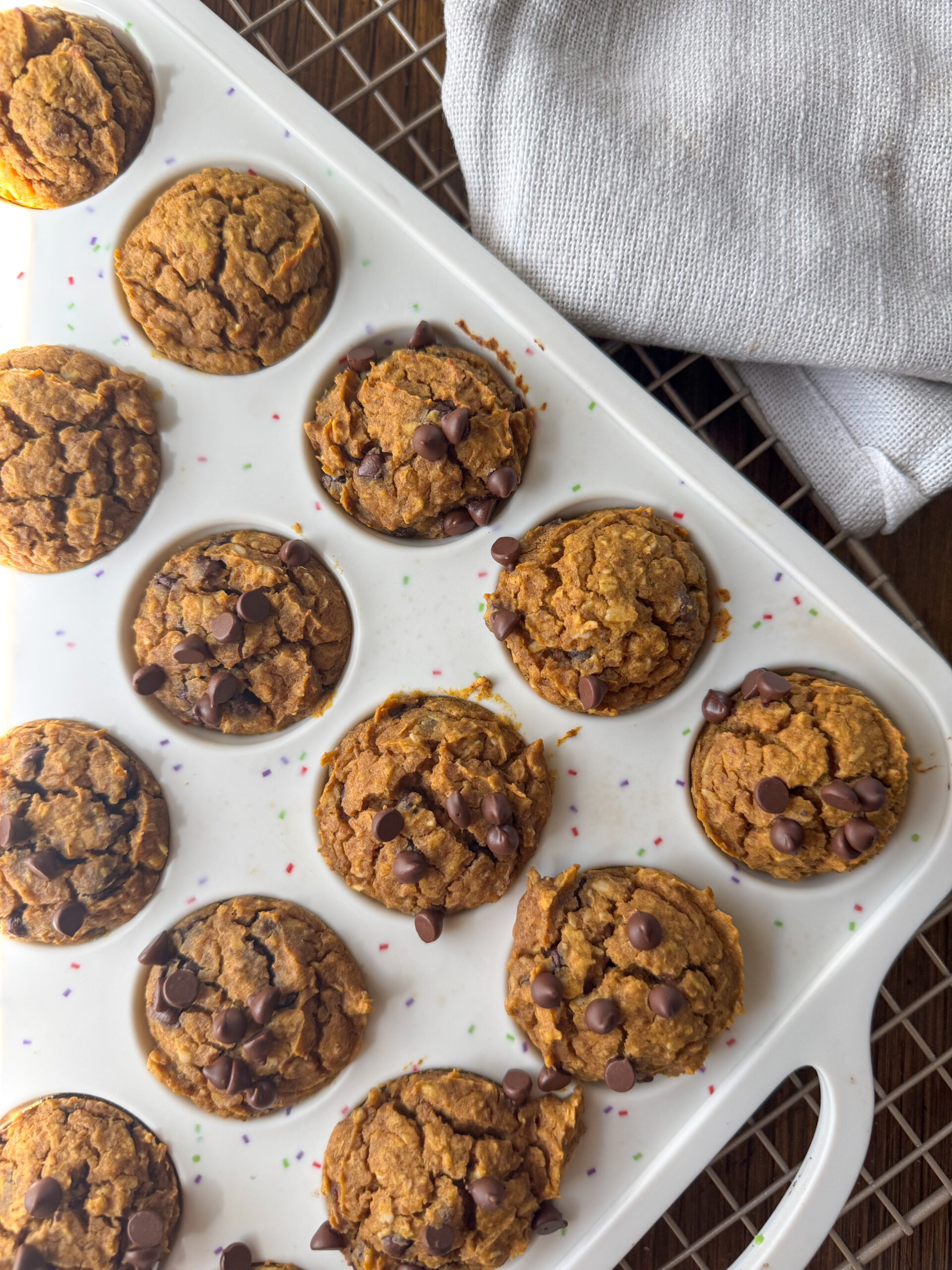
Tiff's Dietitian Tip
A toddler’s portion is usually about ¼-½ of an adult serving, so don’t stress if it looks “small.” Even a few bites add up over time when iron-rich foods are offered consistently!
How to Boost Absorption With Iron Rich Foods
Iron rich foods for toddlers are a great starting point, but here are a few tips to help your toddler's body get the most bang for it's buck!
- pair iron with vitamin C → this helps our little ones' bodies absorb more iron! try pairing beans with strawberries, meatballs with tomato sauce, eggs with peppers
- cook in cast iron pans → this can help increase the iron in nonheme food, like tomato sauces and eggs pick up extra iron!
- mix animal + plant iron → beef with beans or chicken with spinach
- stagger dairy → milk with snacks, not iron-rich meals since dairy inhibits iron absorption due to the calcium and protein content

How Iron Deficiency Can Lead to Picky Eating
Some parents don't realize that low iron can actually make picky eating worse. Symptoms may include:
- decreased appetite
- fatigue or irritability
- poor sleep
- refusal of protein-rich foods
- less interest in trying new foods
If your toddler suddenly becomes very selective, especially around meat and beans, talk to your pediatrician about checking their iron levels (ferritin) or book a call with me to review your toddler's intake!
Okay, Let's Wrap It Up!
Iron is a cornerstone nutrient starting at 6 months and through the toddler years. Meeting those needs doesn’t have to be complicated! By serving iron rich foods in toddler-friendly portions, using fun recipes, including them in the kitchen, and pairing with vitamin C, you’ll help your little one thrive.
Remember, exposure counts just as much as intake. Keep offering iron rich foods in different ways, even if your toddler only takes a bite or two. Over time, those little bites add up! And there are SO many ways they can meet their iron needs!
If you found this post on iron rich foods for toddlers helpful, I would love for you to leave a rating or comment if you'd like to see more of these type of posts! And if you're still feeling stuck on your feeding journey with your toddler or stuck in food ruts, APPLY HERE to chat more with me and get the knowledge + confidence you deserve to help your little one get the nutrition they need!
You don't have to stay feeling stuck in the feeding journey forever. They didn't teach us these things in school and is exactly why I created Nourished Littles to help parents feel confident at the table.
xoxo, toddler dietitian tiff
Disclaimer: This post is for educational purposes only and should not replace individualized medical advice. Every child develops at their own pace, and safe food choices will depend on your little one’s age, chewing ability, and readiness for textures. Always supervise your baby or toddler during meals and adjust food sizes and textures as needed.

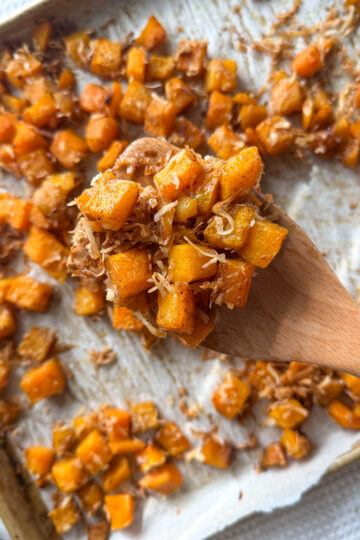
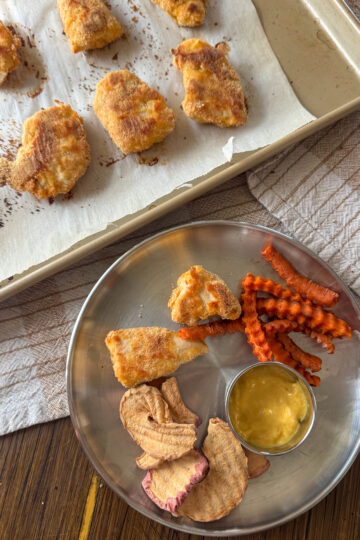
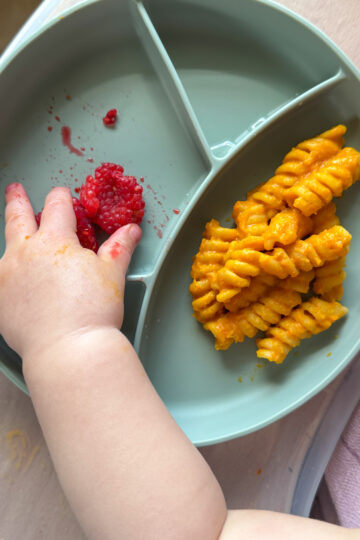
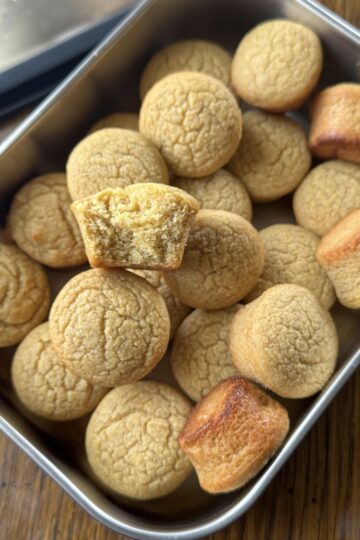
Anna says
This is so helpful and you made it so simple with these ideas! Thank you, Tiffany